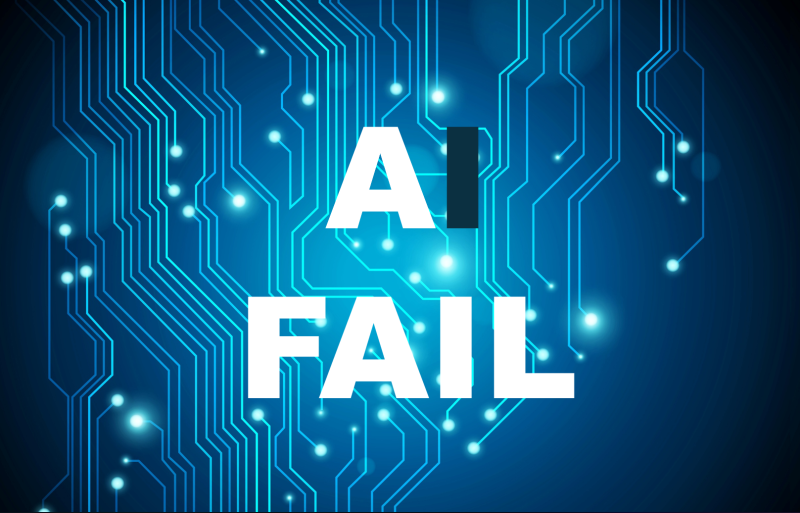80% of AI Projects Fail – Why? And What Can We Do About It?

Despite the immense hype and potential of Artificial Intelligence, Machine Learning and Generative AI, a staggering 80% of AI projects in organizations fail, according to research from Rand Corporation. As well, Gartner reports only 30% of AI projects move past the pilot stage. Why is that? And what can we do to fix this?
The research defines several reasons from unrealistic expectations, board pressure, and user misunderstanding, but the most significant reason comes down to data, the lifeblood of AI: Data.
Data is the lifeblood of AI… Starting AI projects without solid data is like trying to build a house without a blueprint.
Data Challenges: The Achilles’ Heel of AI Projects
AI systems thrive on data, and the quality, quantity, and accessibility of this data are paramount. ClearSight AI from IHL Group highlights several critical data challenges that organizations must address to improve their chances of AI success1.
- Data Availability: AI projects often require vast amounts of data to train models effectively. However, not all organizations have access to the necessary data. This scarcity can stem from various factors, including data silos, privacy concerns, and regulatory restrictions. Without sufficient data, AI models cannot learn and generalize effectively, leading to suboptimal performance.
- Data Quality and Cleanliness: For AI models to deliver accurate and reliable results, the data fed into them must be clean, accurate, and well-tagged. Unfortunately, many organizations struggle with data that is incomplete, inconsistent, or riddled with errors. This lack of data integrity can lead to flawed AI models that produce unreliable outcomes.
- Data Governance: Effective data governance is crucial for ensuring data quality and compliance with legal and regulatory requirements. However, many organizations lack robust data governance frameworks, leading to issues such as data breaches, non-compliance, and ethical concerns. These challenges can derail AI projects and expose organizations to significant risks.
- Data Formats: Is your data in a format that AI can leverage? Whether it is traditional AI/ML or for the purposes of GenAI, the data must be in a format that AI can leverage. This is not an OLTP or OLAP database that most of our enterprise data resides in today. A separate neural map is required of the data to get real-time accurate results.
- Data Usability: If you get the first 4 correct, then the big question is are your systems ready to accept those updated conclusions? You can have a system that spits our recommendations all day long, but if these are not in a format or your enterprise systems cannot accept that input, all the upfront work is for naught.
Now while it is tempting to say, “This really only applies to traditional AI/ML, and Generative AI is different.” That is only true to the fact if you are only focusing on a handful of use cases for enterprises. This approach will miss the incredible opportunities ahead.
To get the truly exponential opportunity that Generative AI can achieve, it also must be rooted in the core enterprise data that is clean, accurate, tagged, abundant and legal to use. It is using Generative AI on top of the same foundation that you would use for AI/ML success.
And there lies the rub. I equate the state of retail AI to getting from Times Square to LaGuardia Airport. There are some retailers like Walmart, Target, Amazon, Kroger, and some others that are through the tunnel and either at or past the toll booth to get on the Long Island Expressway. But the vast majority of retailers are stuck between 7th and 8th Avenue on 42nd street in bumper-to-bumper traffic, fighting their data issues. Their companies have underspent on IT for so long that their IT systems and data are not ready for AI.
This is the reason why at IHL we created ClearSight AI – a comprehensive solution designed to help organizations identify and address data issues before embarking on AI projects by providing a framework for evaluating AI opportunities based on several key dimensions, including data readiness, legal compliance, system preparedness, skills assessment, and risk factors. By identifying potential pitfalls and assessing project readiness across multiple dimensions, we are empowering companies to make informed decisions and significantly increase their chances of AI success before investing.
The high failure rate of AI projects is sobering. But even more concerning as an analyst, we are seeing in our research data a disturbing trend where lower performing retailers (by sales growth) that are looking to Generative AI is an end-around to try and catch up. Deploying Generative AI at rates sometimes 90% higher rates than the best sales growth performers. This is a recipe for disaster.
You cannot take an AI helicopter to LaGuardia and skip the hard work required for the data foundation. Data readiness, quality, and governance are critical factors that can make or break AI initiatives. By addressing these challenges head-on, organizations can significantly improve their chances of AI success.
For more information on ClearSight AI click here or see IHL’s other research on AI Readiness here.